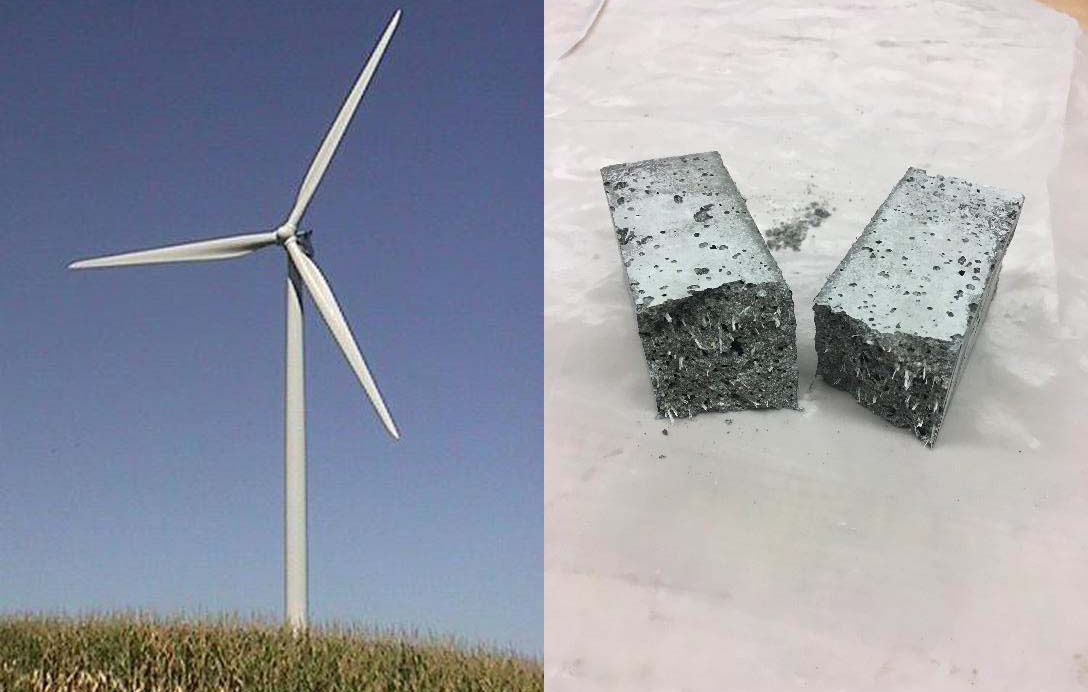In this study, recycled glass fiber reinforced polymer composites from end-of-life wind turbine blades were evaluated as a replacement for sand in cement mortar.
In the last two decades, glass-based materials in the form of powder or fibers from recycled bottles and other products, and more recently recycled glass fiber reinforced polymer (GFRP) composites from end-of-life products or industrial waste, have been incorporated into cement-based mixtures in various proof-of-concept designs.
Incorporating glass into concrete has potential because for some construction, lightweight concrete is favorable, and glass, which is relatively light in comparison with the raw materials typically used in concrete, can reduce overall density when used to replace some concrete constituents. In addition, glass waste in concrete may have a beneficial effect on the mechanical properties of concrete, such as modulus of rupture and flexural strength. Incorporation of these materials also offers an environmentally and economically beneficial reuse of materials that are mounting in waste piles and provides an opportunity to conserve the raw materials that are used to produce concrete.
To understand better how GFRP would affect the properties of mortar, researchers conducted a feasibility study to compare different GFRP sizes and percentages. GFRP panels from retired wind turbine blades were processed with a hammer mill and shredder. In Phase I of the study, the mechanically refined GFRP particles were then sieved into four size groups to find the optimum size.
In Phase II, the selected GFRP size group was incorporated into the mortar at three volumetric levels in order to identify the optimum percentage for replacing sand. The mixtures were tested for compressive strength, flexural strength and toughness over 90 days, and alkali-silicate reaction tests were performed to determine potentially negative reactions between the GFRP and cement paste.
Incorporation of GFRP in mortar proved promising for improving flexural strength and toughness in fiber-like shapes and at 1 to 3 percent volume.
Authors:
Harry Rodin III
Somayeh Nassiri
Karl Englund
Osama Fakron
Hui Li
WSU Department of Civil and Environmental Engineering
Sponsor: Center for Environmentally Sustainable Transportation in Cold Climates

